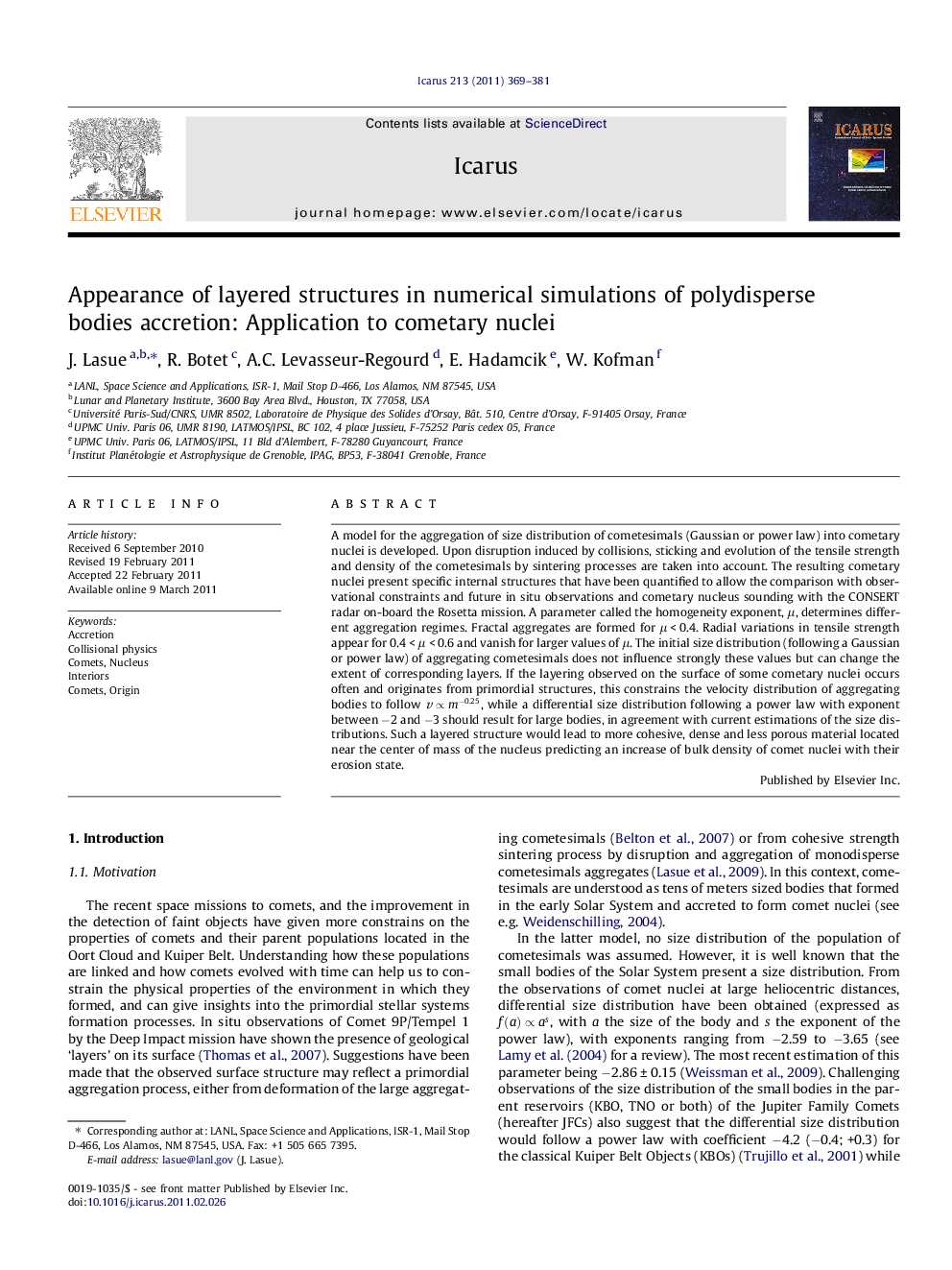| Article ID | Journal | Published Year | Pages | File Type |
|---|---|---|---|---|
| 1773886 | Icarus | 2011 | 13 Pages |
A model for the aggregation of size distribution of cometesimals (Gaussian or power law) into cometary nuclei is developed. Upon disruption induced by collisions, sticking and evolution of the tensile strength and density of the cometesimals by sintering processes are taken into account. The resulting cometary nuclei present specific internal structures that have been quantified to allow the comparison with observational constraints and future in situ observations and cometary nucleus sounding with the CONSERT radar on-board the Rosetta mission. A parameter called the homogeneity exponent, μ, determines different aggregation regimes. Fractal aggregates are formed for μ < 0.4. Radial variations in tensile strength appear for 0.4 < μ < 0.6 and vanish for larger values of μ . The initial size distribution (following a Gaussian or power law) of aggregating cometesimals does not influence strongly these values but can change the extent of corresponding layers. If the layering observed on the surface of some cometary nuclei occurs often and originates from primordial structures, this constrains the velocity distribution of aggregating bodies to follow v∝m-0.25v∝m-0.25, while a differential size distribution following a power law with exponent between −2 and −3 should result for large bodies, in agreement with current estimations of the size distributions. Such a layered structure would lead to more cohesive, dense and less porous material located near the center of mass of the nucleus predicting an increase of bulk density of comet nuclei with their erosion state.
► A model of primordial cometary nuclei aggregation is presented for polydisperse cometesimals. ► Different regimes of aggregation exist depending on the value of the homogeneity exponent μ. ► Radial variations in tensile strengths appear for 0.4 < μ < 0.6 and vanish for larger values of μ. ► A radial variation in density and local porosity is expected with denser material near the center. ► A direct consequence is the increase in bulk density of the comets with their erosion state.
